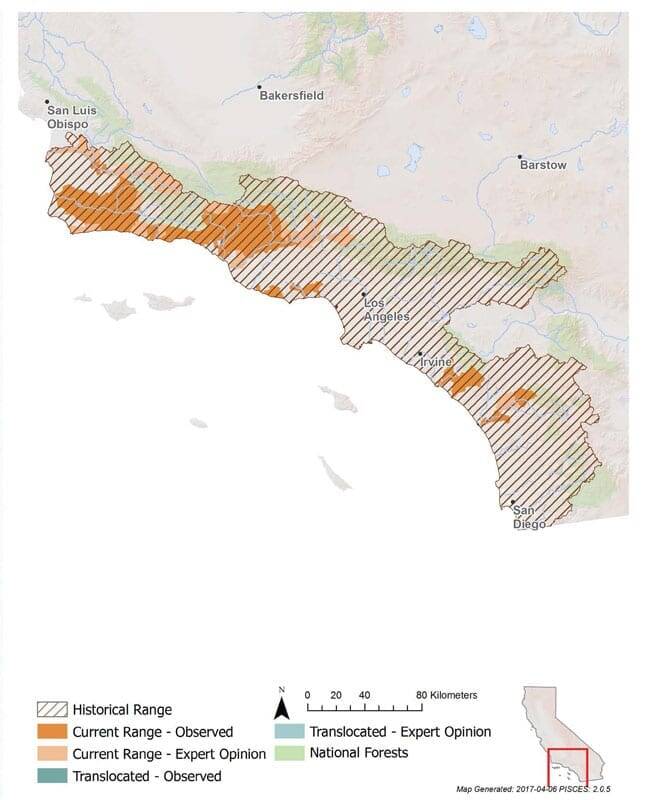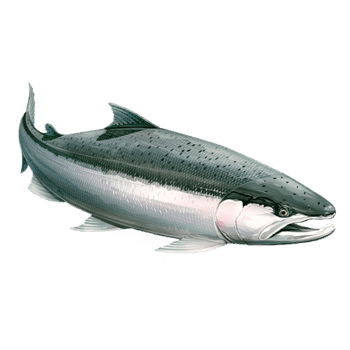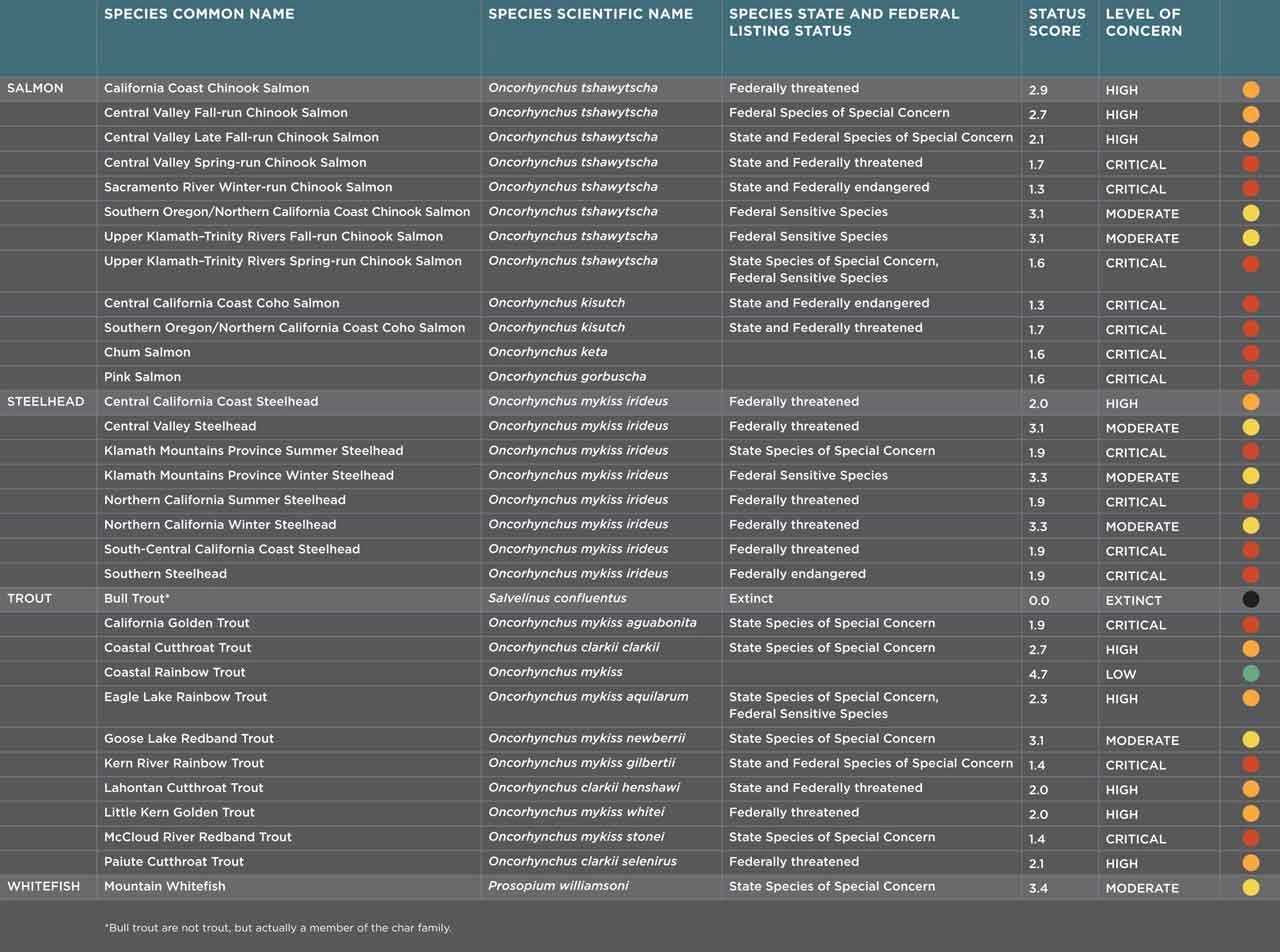How we're working to save them:
- Reduce surface water diversions and groundwater pumping, increase use of recycled water, and expand conservation measures to improve habitat for Southern steelhead.
- Manage native resident Rainbow trout with Southern steelhead as part of the DPS to acknowledge that resident fish can produce smolts and anadromous offspring under favorable environmental conditions.
- Remove fish passage barriers and expedite dam removal projects including Matilija Dam (Ventura River), Rindge Dam (Malibu Creek), and other passage barrier remediation projects.
- Develop and implement baseline monitoring within the Coastal Salmonid Monitoring framework.
- Remove non-native aquatic species in prime trout habitat.
Where to find Southern Steelhead:
Southern Steelhead Distribution
Rainbow trout historically populated all coastal streams of southern California with permanent flows, as either resident or anadromous forms, or both. Today, the Southern steelhead range spans over 30,000 square km (about 11,580 square miles), has over 41,500 km (25,785 miles) of mostly intermittent streams, and is home to more than 22 million Californians. The DPS includes all naturally spawned anadromous Coastal Rainbow trout populations downstream of natural and human-made barriers in streams from the Santa Maria River (San luis Obispo County) to the Tijuana River on the U.S.-Mexico border. They are most abundant in the four largest watersheds in the northern portion of their range: the Santa Maria, Santa Ynez, Ventura, and Santa Clara rivers.
How they Southern Steelhead Scored:


Characteristics
Southern steelhead generally have longer, more streamlined bodies than their northern counterparts to facilitate passage through southern California’s characteristic low, flashy streams
Abundance
In the 19th Century, the Santa Ynez probably supported the largest runs of Southern steelhead throughout their range, likely between 20,000 to 30,000 adults per year, while the other large watersheds likely supported runs of a few thousand adults per year. in the last five years, the number of adult anadromous steelhead has declined significantly, to the point that it is now rare to see them in the wild.
Habitat & Behavior
Southern steelhead tolerate warmer water temperatures than their northern counterparts, up to about 25˚C (77˚F), before they seek refuge in pools with cool seeps. They depend on winter rains to provide passage through seasonally opened estuaries and lagoons to reach upstream spawning tributaries. Juvenile steelhead may feed in fresh water for up to three years before migrating to the Pacific Ocean. While anadromous steelhead are only sporadically present in the current population, resident Rainbow trout occupy the upper watersheds of most rivers year-round and may be responsible for maintaining steelhead runs through their offspring when streamflow conditions are favorable. Anadromous offspring from resident parents are common enough to make protection of resident fish an integral component of Southern steelhead recovery.
Genetics
The environmental and genetic factors that underlie their ocean migrations are under active investigation. Populations in the larger watersheds in the northern part of the DPS (Santa Clara, Ventura, Santa Ynez and Santa Maria rivers) have remained un-hybridized, despite decades of stocking hatchery-origin Rainbow trout. Some resident Rainbow trout populations in the southernmost portion of the DPS have hybridized with hatchery-origin fish above barriers such as dams and diversions. However, three populations of pure native Southern steelhead are present in the San Luis Rey, Santa Ana, and San Gabriel rivers today.





















 Dams block access to historical spawning and rearing habitats. Downstream, dams alter the timing, frequency, duration, magnitude, and rate of change of flows decreasing habitat quality and survival.
Dams block access to historical spawning and rearing habitats. Downstream, dams alter the timing, frequency, duration, magnitude, and rate of change of flows decreasing habitat quality and survival.